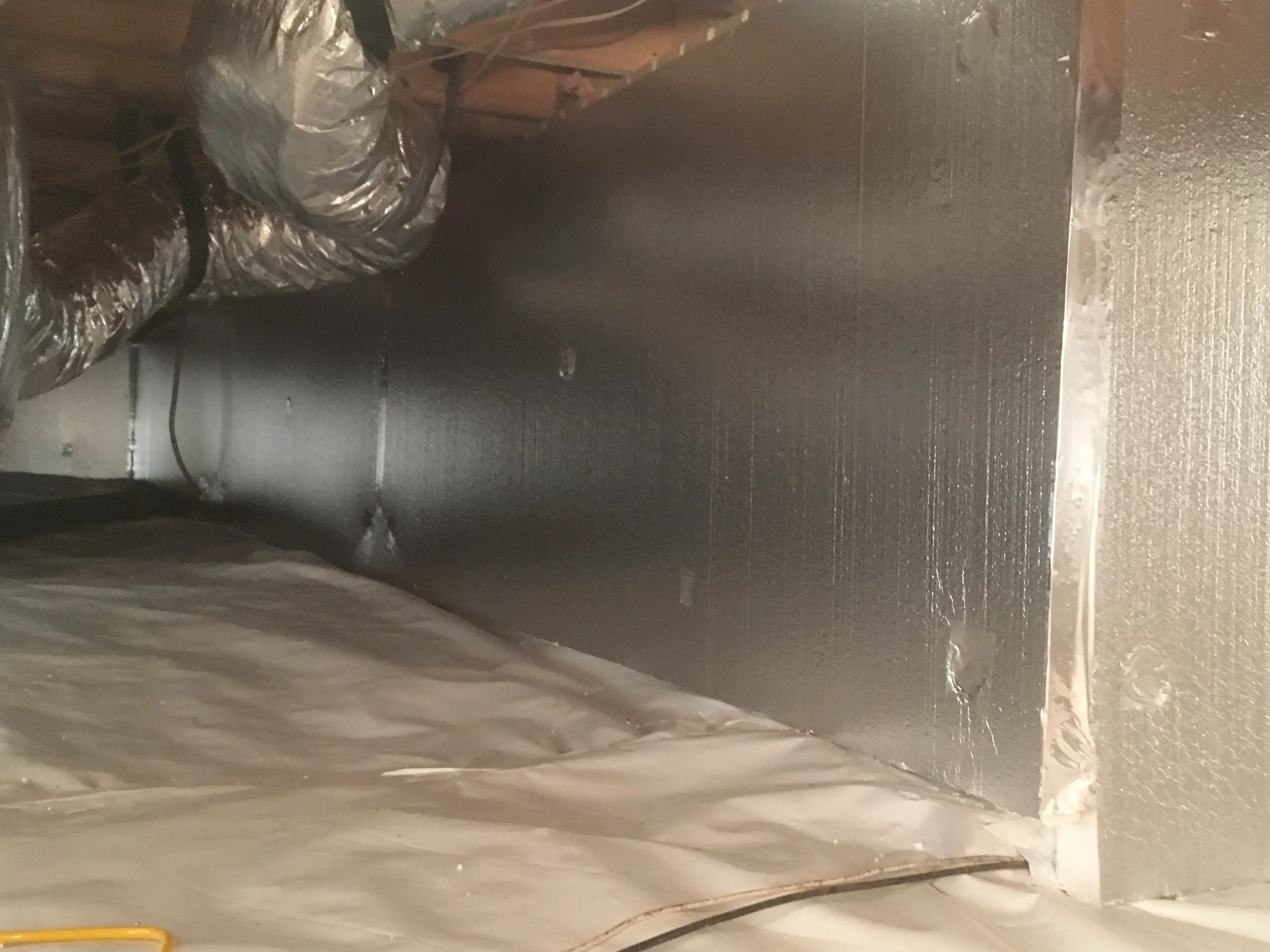Encapsulated Crawl Spaces
For some homes, crawl space encapsulation may be an effective way to seal and insulate your crawl space against moisture and humidity.
Encapsulation Process
Encapsulating or "sealing" a crawl space starts with a properly installed and sealed vapor barrier as a first step. The new vapor barrier is installed and the footings and foundation piers are wrapped and sealed.
Next any and all cracks and crevices are sealed, vents are closed and sealed to prevent any humid outside air from getting in.
Flooring insulation should be repaired or replaced. This also helps to remove any dirt, mold or other contaminants that may be trapped in the old floor insulation. Insulated panels of foam board are then sealed to the foundation walls. These panels insulate the now encapsulated space and create a seal against humid air from outside.
Once the space is prepared we choose the best way to mechanically control air moisture. Sometimes an existing HVAC system can be redirected into the crawl space if the system is properly sized for additional capacity but generally we prefer to use specialized crawl space dehumidifiers. The Santa Fe line of dehumidifiers are specially designed to manage crawl space conditions and require very little maintenance when properly installed.
Encapsulation and Energy Savings
Depending on your crawl space conditions you may even offset the cost of encapsulation with energy savings. NC based non-profit energy consulting firm, Advanced Energy has done extensive studies on encapsulated crawl spaces and the problems of moisture in the crawl space and they are a great resource. In a 2005 study of homes in North Carolina, Louisiana and Arizona, they found that encapsulation solved not only the primary goal of controlling moisture but in some cases provided energy savings as well.
Closed Crawl Space Article by Advanced Energy
Advanced Energy Crawlspace Page
FAQ and Common Questions: Encapsulation


